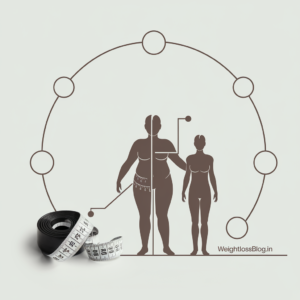The Essential Do’s and Don’ts of the Paleo Diet for Weight Loss
Introduction
The Paleo Diet has become one of the most popular dietary approaches for people looking to lose weight and improve their health naturally. Based on the idea of eating like our ancestors did during the Paleolithic era, the Paleo Diet focuses on whole, unprocessed foods while eliminating grains, dairy, and processed sugars. However, to succeed on this diet, it’s crucial to follow certain guidelines and avoid common pitfalls. In this guide, we’ll cover the essential do’s and don’ts to help you get the most out of your Paleo journey.
Do’s  of the Paleo Diet
of the Paleo Diet
1. Do Focus on Whole, Unprocessed Foods
The cornerstone of the Paleo Diet is eating whole, unprocessed foods that are nutrient-dense and free of additives. This includes meats, fish, vegetables, fruits, nuts, and seeds. By sticking to these natural foods, you’ll provide your body with the essential vitamins and minerals it needs to function optimally while avoiding the empty calories and harmful chemicals found in processed foods.
Whole foods also help to control your appetite, making it easier to maintain a calorie deficit without feeling hungry. When you focus on whole foods, you’re more likely to see faster and more sustainable Paleo diet weight loss results.
2. Do Include Healthy Fats in Your Diet
Healthy fats are an important part of the Paleo Diet and play a key role in providing energy and supporting overall health. Incorporate sources of healthy fats such as avocados, olive oil, coconut oil, and fatty cuts of grass-fed meat. These fats will keep you feeling full longer and reduce cravings for unhealthy, high-carb snacks.
Since grains and processed foods are eliminated on the Paleo Diet, it’s essential to rely on fats and proteins for energy. Embracing healthy fats ensures you stay satisfied throughout the day without over-relying on carbohydrates.
3. Do Prioritize Grass-Fed and Wild-Caught Proteins
Whenever possible, opt for grass-fed meats and wild-caught fish over conventionally farmed options. These sources of protein are not only more nutrient-dense, but they also contain higher levels of omega-3 fatty acids, which are essential for reducing inflammation and promoting heart health.
By prioritizing high-quality proteins, you’re ensuring that your diet aligns with the ancestral principles of the Paleo lifestyle, while also supporting your weight loss goals and overall health.
4. Do Incorporate Plenty of Vegetables
Vegetables are a vital component of the Paleo Diet, providing a wide range of vitamins, minerals, and fiber to support digestion and overall well-being. Focus on non-starchy vegetables like spinach, kale, broccoli, cauliflower, and bell peppers to create balanced, nutrient-rich meals.
Vegetables also provide essential fiber, which helps with digestion and keeps you feeling full, making it easier to stick to your calorie goals. Including a variety of colorful vegetables in every meal is key to maintaining optimal health on the Paleo Diet.
5. Do Experiment with Paleo-Friendly Snacks
Snacking on the Paleo Diet doesn’t have to be complicated. Keep Paleo diet  food list for beginners staples like nuts, seeds, hard-boiled eggs, and fresh fruit on hand to satisfy hunger between meals. These snacks are rich in nutrients and will help you avoid processed options that are high in sugar and unhealthy fats.
food list for beginners staples like nuts, seeds, hard-boiled eggs, and fresh fruit on hand to satisfy hunger between meals. These snacks are rich in nutrients and will help you avoid processed options that are high in sugar and unhealthy fats.
Healthy snacks can prevent overeating during main meals and help you stay on track with your weight loss goals, especially when hunger strikes unexpectedly.
6. Do Stay Hydrated
Proper hydration is crucial for any diet, and the Paleo Diet is no exception. Drinking enough water helps with digestion, supports metabolism, and keeps your energy levels high. Aim for at least 8 glasses of water per day, and consider drinking herbal teas for variety.
Staying hydrated also helps prevent overeating, as thirst is often mistaken for hunger. Make it a habit to carry a water bottle with you throughout the day to ensure you’re drinking enough.
7. Do Cook at Home
One of the best ways to stick to the Paleo Diet is by preparing your meals at home. This gives you full control over the ingredients and ensures that you’re not consuming hidden sugars, additives, or unhealthy oils found in restaurant meals or pre-packaged foods.
Preparing best Paleo diet recipes for dinner at home allows you to experiment with new ingredients, try creative meal ideas, and stick to your diet plan more easily. Plus, cooking at home can save you money while ensuring you stay on track with your health goals.
Don’ts of the Paleo Diet
1. Don’t Eat Processed Foods
One of the main principles of the Paleo Diet is to avoid processed foods. This includes anything with artificial additives, preservatives, or refined sugars. Processed foods are typically high in empty calories, unhealthy fats, and sugars that  can lead to weight gain and negatively impact your health.
can lead to weight gain and negatively impact your health.
Always read labels carefully, and if you see ingredients you can’t pronounce or wouldn’t find in nature, it’s best to avoid that food. Sticking to whole, unprocessed foods is the best way to stay true to the Paleo lifestyle.
2. Don’t Consume Dairy Products
Dairy products like milk, cheese, and yogurt are not part of the Paleo Diet, as they were not available to our ancestors. Dairy can also cause digestive issues and inflammation for some people, making it best to avoid these products while on Paleo.
Instead, look for non-dairy alternatives such as almond milk or coconut milk. These alternatives can be used in cooking or added to recipes as a replacement for traditional dairy.
3. Don’t Eat Grains or Legumes
Grains (like wheat, rice, and oats) and legumes (like beans, lentils, and peanuts) are not allowed on the Paleo Diet because they were not consumed during the Paleolithic era. These foods can cause digestive issues for some people and may contribute to weight gain and inflammation.
Although grains and legumes are common in many diets today, Paleo excludes them to maintain a more ancestral way of eating. Focus on vegetables, meats, fruits, and nuts for nutrient-rich, filling meals without relying on grains or legumes.
4. Don’t Overeat Fruits and Nuts
While fruits and nuts are Paleo-friendly, it’s important to eat them in moderation, especially if your goal is weight loss. Fruits contain natural sugars, and overconsumption can lead to excess calorie intake. Similarly, nuts are calorie-dense, and it’s easy to overeat them if you’re not careful.
Stick to low-sugar fruits like berries and limit your nut intake to a handful per day to avoid consuming too many calories.
5. Don’t Skimp on Protein
Protein is a key component of the Paleo Diet, and it’s important not to skimp on it. Protein helps build and repair muscle, keeps you feeling full, and boosts your metabolism. Make sure that each of your meals includes a good source of protein, such as meat, fish, or eggs.
By prioritizing protein, you’ll support your weight loss efforts and maintain muscle mass, which is essential for a healthy metabolism.
6. Don’t Ignore Your Body’s Signals
Listening to your body is crucial on any diet, and the Paleo Diet is no different. Pay attention to how you feel after meals and adjust your portion sizes, food choices, and meal timing based on your energy levels, hunger, and mood.
If you find that you’re constantly feeling tired, moody, or hungry, it may be a sign that you need to adjust your macronutrient intake or eat more frequently. The Paleo Diet is not a one-size-fits-all approach, so it’s important to customize it to your unique needs.
7. Don’t Forget About Portion Control
Even though the Paleo Diet focuses on whole foods, it’s still possible to overeat, especially if you’re consuming high-calorie foods like nuts, seeds, and avocados. Pay attention to portion sizes and listen to your body’s hunger cues to avoid overeating and stalling your weight loss progress.
Being mindful of portion sizes can help you achieve your weight loss goals faster without feeling deprived.
Conclusion
By following these essential do’s and don’ts, you can navigate the Paleo Diet successfully and achieve your weight loss and health goals. The Paleo Diet emphasizes whole, unprocessed foods, making it a natural and sustainable way to shed pounds and improve overall well-being. Focus on incorporating nutrient-dense ingredients, stay mindful of portion sizes, and avoid processed and modern foods to stay on track.
As always, it’s important to listen to your body and adjust your diet based on your unique needs. With dedication and consistency, the Paleo Diet can help you transform your health and achieve lasting results.